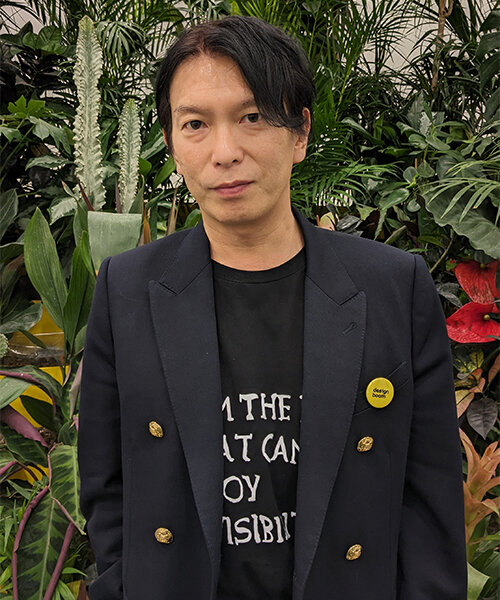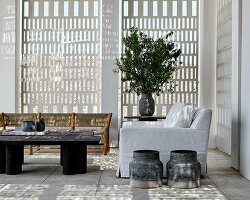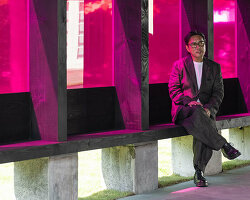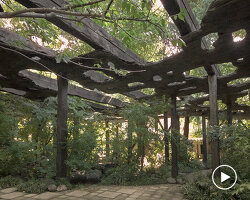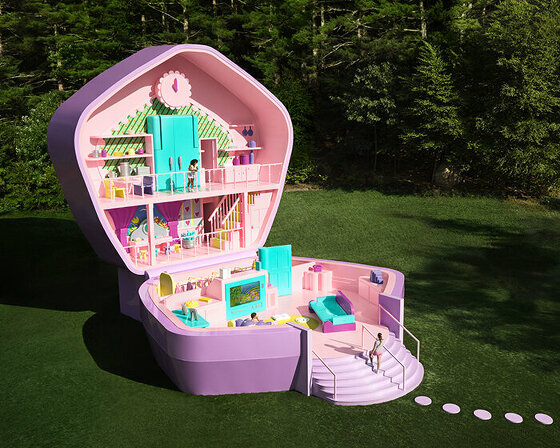junya ishigami at IN FOCUS: RADICAL REPAIR AT TRIENNALE MILANO
Hosted at the Triennale di Milano on September 28, 2023, In Focus: Radical Repair brought together renowned designers to contemplate architecture’s pivotal role in addressing the climate crisis and its potential to instigate revolutionary forms of repair. This public program, coordinated by The World Around and the Fondation Cartier pour l’art contemporain, featured a remarkable lineup of international creatives, such as Yasmeen Lari, Joseph Grima, Jeanne Gang, Junya Ishigami, Lu Wenyu, Paul Elvis Tangem, Aziba Ekio and Freddy Mamani.
Continuing our series of interviews with the event’s esteemed speakers, which began with an insightful conversation with Freddy Mamani, we now turn our attention to Junya Ishigami. Ishigami is a preeminent Japanese architect celebrated for his experimental, creative, and eco-conscious style. At In Focus: Radical Repair, he embarked on a journey of exploration, delving into radical approaches to architecture, landscape, and ecology. To gain deeper insights into his thought-provoking discourse, designboom had the opportunity to attend his presentation and speak with him in person. Discover the complete interview below.
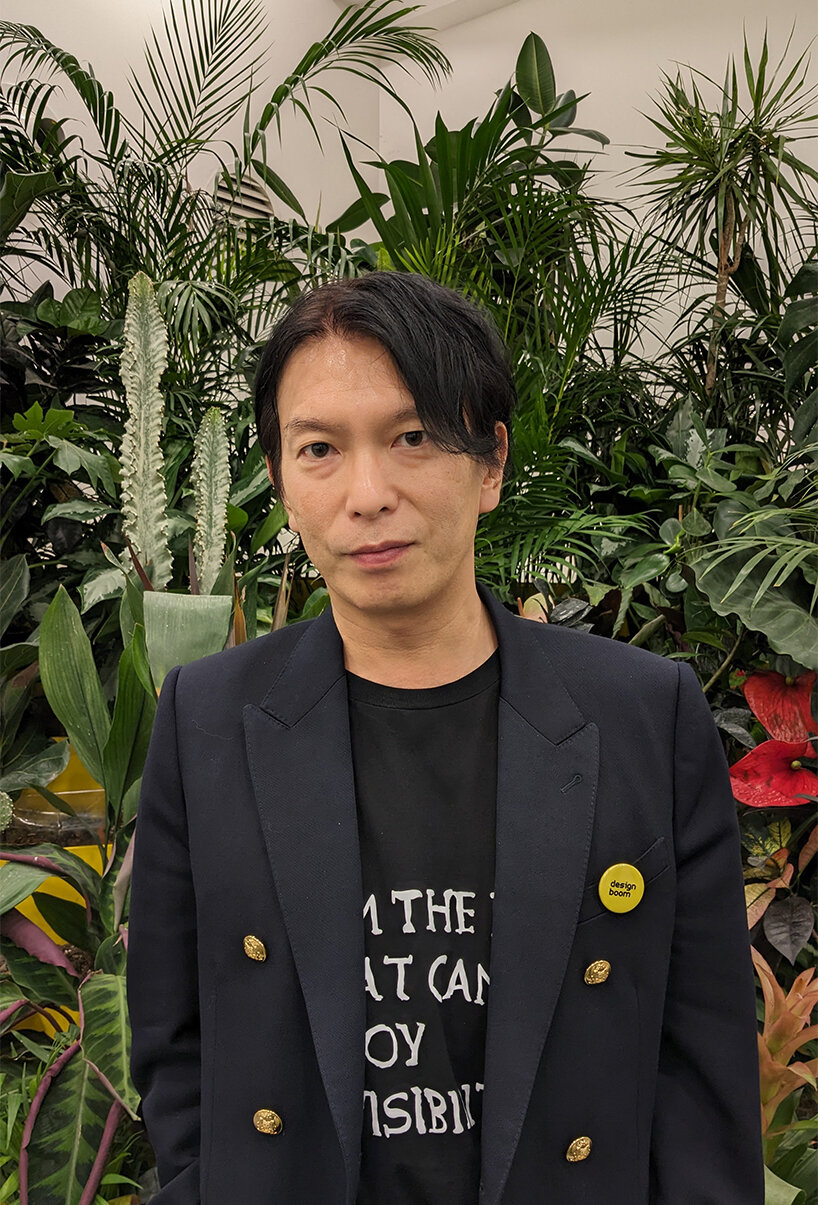
portrait of Junya Ishigami | image © designboom
INTERVIEW WITH JAPANESE ARCHITECT JUNYA ISHIGAMI
designboom: During your speech, you delved into the concept of bridging man-made architecture with nature. Could you provide more details on that or elaborate further? What does this mean, and what are your architectural intentions regarding this concept?
Junya Ishigami (JI): From the beginning, I always think about how we can create the environment. So, I don’t want to give a strict definition of space and environment, but for me, the environment includes the surroundings. So, I’m always finding a good way to make a connection with architecture and its surroundings. I think the definition of the moment and the definition of nature might be difficult, but the crucial point is the surrounding environment, which is very important. This relationship is crucial, even if artificial elements are involved. Artificial things can include natural components because humans themselves are part of nature. So, I don’t want to divide man-made and natural. I want to see them equally.
For example, the Water Garden (see designboom’s previous coverage here) is set within an area where there are no longer purely natural parts. Humans planted trees there around 300 to 400 years ago, creating a forest. This kind of environment represents an intermediate condition between nature and human-made elements. It’s a border area, a transition zone between a completely natural area and a human-altered one. Creating spaces like this, in between environments, is very important to me. So, I aim to establish a connection between architecture and its surroundings that transcends rigid definitions.

Art Biotop Water Garden on the foothills of the Nasu Mountains (find designboom’s coverage here) | image © Nikissimo Inc.
DB: You play around with organic forms, and they are present in your architectural works. Can you tell us the intention of employing them in your design ethos?
JI: I don’t want to focus just on the organic aspect. The important point is that I don’t want to make any specific form. I want to create something distinct for each context. As I mentioned, the relationship with the surroundings is crucial. The surroundings continuously vary from one position to another, so we have to adjust something unique for each part. Therefore, the ultimate form or spatial condition will differ for each space. The goal is to create something that feels natural in each specific context.

‘House & Restaurant‘ in Yamaguchi, Japan (find designboom’s coverage here) | image © Junya.Ishigami+Associates (also head image)
DB: Japan can be known as a country that has experienced environmental challenges. How do your architectural designs and principles have adapted to these climate changes or needs in the country?
JI: Yes, so I think about architecture in a different way now. It’s not just about the city; it’s about nature too. Before the 20th century, the focus was mainly on the city, with architects proposing designs for cities. But today, I believe that the city is too small a scale to consider the possibilities and problems of architecture. In our daily lives, we constantly think about the entire Earth and the larger environment, like climate change. So, I want to think about architecture on a much larger scale because it’s not just about me. It’s about something more significant. In our daily lives, we now consider how humans fit into the bigger picture. In the 20th century, our focus was primarily on the city, but now our perspective has expanded to include the entire globe and the broader environment. I want to broaden people’s perspectives in this way.

Kokage-gumo pavilion in Chiyoda-ku, Tokyo (find designboom’s coverage here) | image © Junya.Ishigami+Associates
DB: Some architects these days may value beauty or aesthetics over functionality or sustainability. Do you think it’s possible to combine them all together? Or do you think architecture nowadays goes for a more visual appeal and less for functionality?
JI: I believe that defining the functionality of architecture has become quite challenging. In the past, for instance, office buildings had a standard solution. But today, even within the category of offices, there’s tremendous variation. Some people work from home, some prefer large office buildings, and so on. This diversity means that the definition of an ‘office’ varies from person to person. We can’t pinpoint a single function. Instead, in this era, architects must provide different solutions for different individuals based on their lifestyles and thought processes. Functionality, I think, arises from these personalized solutions. So, it’s not something that can be defined by a one-size-fits-all approach.

Plaza of Kanagawa Institute of Technology (find designboom’s coverage here) | image © Junya.Ishigami+Associates
DB: Are there any new technologies or trends that you want to explore or apply in your architectural practice?
JI: We should consider using new systems and technologies in architecture, but it can be challenging to integrate them seamlessly. New technologies are advancing at a rapid pace, whereas architecture tends to evolve more slowly. In the past, the development of machinery and architecture progressed at a similar speed, but today, IT technology evolves rapidly. What’s considered cutting-edge today might become outdated in just a year. Architecture, on the other hand, is meant to stand the test of time, ideally for centuries. This means that while there can be some integration between technology and architecture, it’s typically the technology that must adapt to the needs of architecture rather than the other way around.

construction process of House & Restaurant | image courtesy of Maison Owl
DB: Is it challenging to combine them? Especially because you mentioned that technology changes rapidly.
JI: In my earlier work, particularly in the initial stages of projects such as the KAIT workshop project (see designboom’s coverage here), we didn’t rely on cutting-edge technology. We developed a new system to design unconventional structures, not your typical buildings. These structures were somewhat analog in nature. I believe that this approach is crucial. I prefer not to superficially attach technology to the exterior of a building. Instead, I think it’s possible to use techniques that are integrated into the very fabric of the building itself. While there may be instances where technology is visible on the surface, my fundamental preference is to avoid it.

KAIT workshop at the Kanagawa Institute of Technology campus (find designboom’s coverage here) | image © Iwan Baan

Kokage-gumo pavilion in Chiyoda-ku, Tokyo | image © Junya.Ishigami+Associates

House & Restaurant in Yamaguchi, Japan (find designboom’s coverage here) | image © Junya.Ishigami+Associates

Culture and Arts Hall Tokushima (find designboom’s coverage here) | © Junya.Ishigami+Associates

Rainbow Carpet in Nakhon Ratchasima, Thailand (find designboom’s coverage here) | © Junya.Ishigami+Associates
project info:
architect: Junya Ishigami | @junya.ishigami_associates
event name: In Focus: Radical Repair
event location: Triennale di Milano, Milan, Italy | @triennalemilano
event date: 28 September 2023
architecture interviews (268)
junya ishigami (30)
PRODUCT LIBRARY
a diverse digital database that acts as a valuable guide in gaining insight and information about a product directly from the manufacturer, and serves as a rich reference point in developing a project or scheme.
